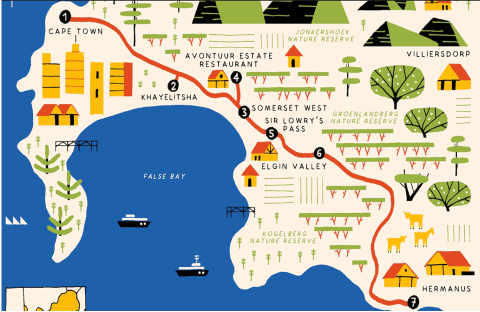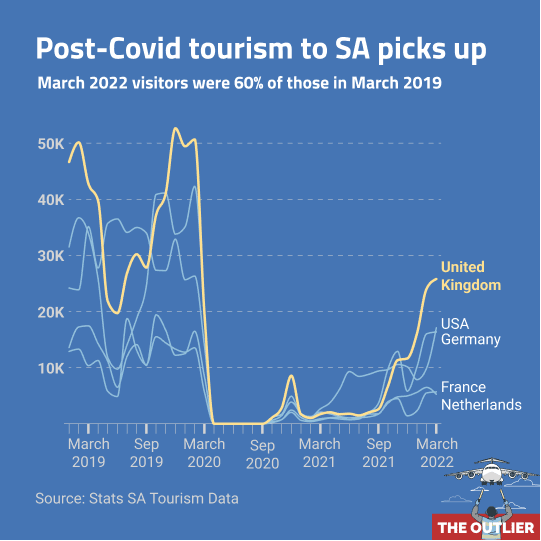Agritourism is an important means of diversifying agriculture-based businesses, helping to build resilience to risk and adding value for local communities and visitors alike.
According to Hanlie Kroese of Santam Agri, agritourism empowers farmers to use a farm to its fullest potential and helps connect farmers with the public. “This counts more than ever in a time where consumers want to know where produce comes from,” she says. “They want to see the faces behind the farms. It’s a way to give them a meaningful glimpse into this world.”
Professor Neels van Heerden, research professor at Tshwane University of Technology and consultant for Rural and Agritourism Africa, believes agriculture will be key to the continent’s long-term economic viability and growth, but there’s lots of work to do.
“Agriculture is poised to capture the lion’s share of future growth in global tourism due to its unique history and natural endowments that offer numerous opportunities to attract visitors,” he says. “Unfortunately, agritourism does not yet fulfil its potential to supplement farm income, contribute to rural and regional economic development, upskilling farm labour, and stimulate local tourism opportunities in South Africa.”
What is agritourism?
It usually comprises four elements: it combines the essential elements of the tourism and agriculture industries; attracts visitors to visit agricultural operations; is designed to supplement farm income and provide rural economic benefits; and provides recreation, entertainment, or educational experiences to visitors.
Successful agritourism is measured by the three pillars of success: economic, social and environmental sustainability. Neglecting any of them can risk the whole enterprise.
Economic efficiency: Sustainable tourism needs to generate wealth. “This grows thanks to domestic and international revenues, which creates jobs directly and indirectly,” says Neels.
Social equity: The long-term impact of tourism on society is considered. “Social equity is often, sadly, the most neglected pillar. The wellbeing of local communities must be a priority. We must launch initiatives that include the local population in the activity and preserve their cultural heritage.”
Environmental conservation: Environmental resources are one of the fundamental tools of tourism; the raw material for many of its products and services. “We must respect and safeguard ecosystems,” says Neels. “This means avoiding the destruction or deterioration of natural resources while weighing up carefully the responsible consumption of resources and land.”
Connecting the world
The South African wine industry has set the benchmark for successfully combining the elements of tourism and agriculture with its well-established wine and agricultural routes. But there is still untapped potential by developing a networks and routes linking farms.
Visitors are showing a greater demand for authentic tourism experiences in local communities and have a strong preference for outdoor activities, scenic drives and cultural experiences, all which agritourism can service.
“Farms can combine their strengths and offerings to grow local agritourism,” says Neels. “They should establish routes where different activities are offered, so tourists can choose what they want to engage in.”

A successful agritourism route in the Western Cape.
Advantages
The Western Cape Department of Agriculture recognised the benefits of agritourism and has published reports to increase understanding about such routes in the Cape Winelands. One case study of the Berg River shows how route tourism encourages travel and tourism, as activities and attractions in less developed areas stimulate local economic development and translate into longer visitor stays.
“Well-planned and properly implemented combinations of tourist and agriculture elements can be very rewarding,” says Neels. “But it’s not a get-rich-quick scheme. By adding a tourism component to a working farm, the risks of seasonal climate effects etc. can be managed.”
These advantages ripple out to the community. When done well, agritourism leads to improved relationships between farmers and the community. A thriving, reputable agritourism destination is usually an asset to the community, drawing visitors who are genuinely interested in investing in the local economy. By helping to put small towns on the map, agritourism can increase sales of local products and services, thereby creating jobs, incentivising skills, and countering urbanisation.

Tourists have begun returning to South Africa (The Outlier)
Agritourism opportunities
“There’s very limited research, and the opportunities are enormous,” says Neels.
One area that warrants exploration is commercialising indigenous crops that are unique to South Africa – a resource that remains largely unknown and untapped in many areas. “Of the 119 commercialised African plants, 16 are indigenous to southern Africa. Awareness must be created that these plants are highly nutritious as they can add more vitamins and minerals to any diet, and they can be added to soups, broths and stews. These plants are resistant to drought, pests and diseases.”
Neels believes small-scale farming enterprises should be identified that could be added as visitor attractions close to existing agritourism routes, and embedding agritourism activities such as planting, growing, harvesting, marketing and consuming these distinctive crops – without trampling on the cultural heritage associated with them.
Grow for growth
Unfortunately, most levels of government are not yet providing enough support since their plans to grow rural economies are not aligned between different departments such as agriculture, tourism, and small business development, says Neels.
On the other hand, organised agriculture such as AgriSA have acknowledged the importance of growing South Africa’s agritourism footprint. “Rural Tourism/Agritourism Africa provides support on a shoestring budget and a small handful of academics are devoting their attention to understanding the uniqueness of agritourism on our continent, region and rural areas.”
“Government, organised agriculture, NGOs, tourism agencies and universities must combine forces to grow agritourism. Funding must be raised to assist Rural Tourism/Agritourism Africa and universities as centres of excellence on agritourism.”
To get more initiatives like these off the ground, Neels mentions five strategies for growth:
- Link tourism offerings to the main agricultural activities in the area/region/province;
- Establish initiatives related to those agricultural products that the area/region/province is a leader in;
- Apply best practices in initiatives learnt from other geographical areas and apply in the relevant area/region/province;
- Establish initiatives related to agricultural products that are indigenous food crops in the area/region/province;
- Identify and establish new markets.
WATCH: Jacqui Taylor, CEO of Agritourism South Africa, explains the requirements to be successful in Agritourism.
Click here to get the latest copy of WineLand Magazine, or subscribe to our monthly newsletter.













